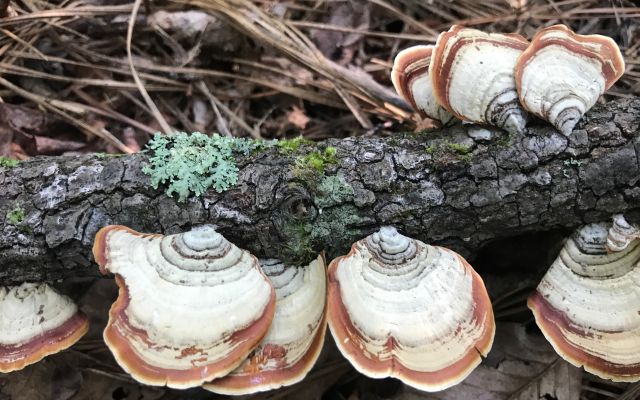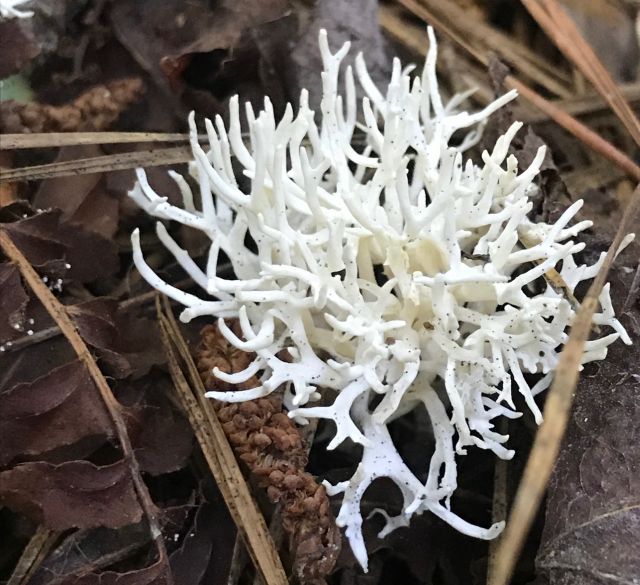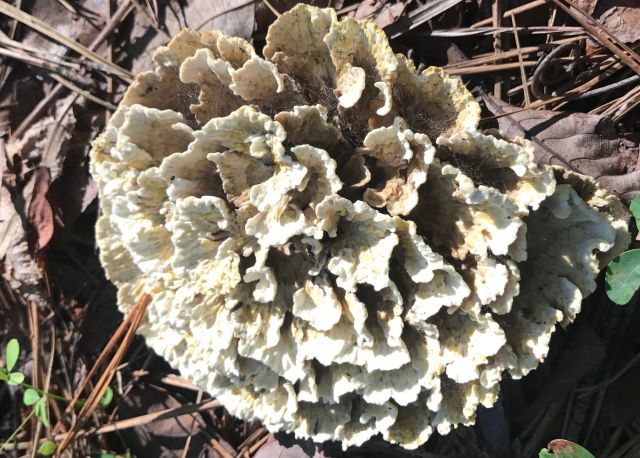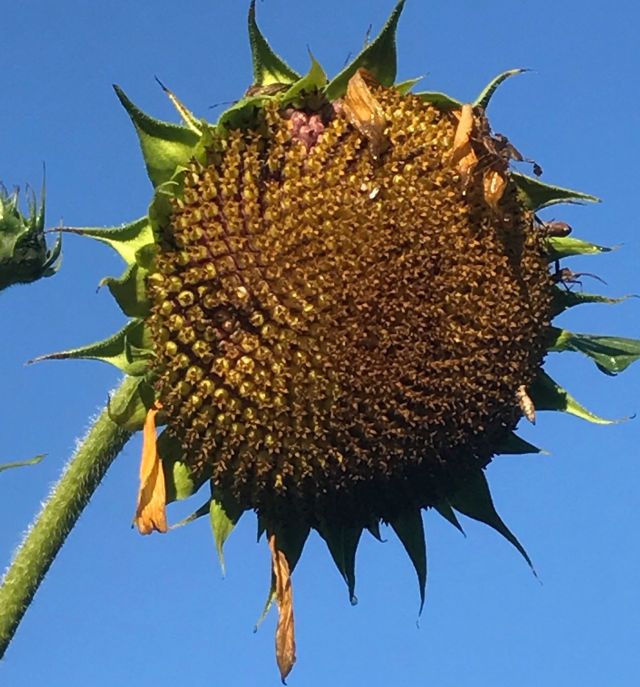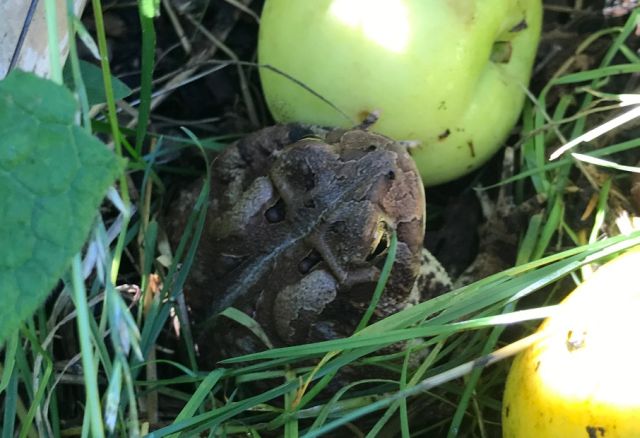We have had lots of rain and in the woods interesting fungi appear such as above or this unusual specimen below.
The puffballs attract little attention while growing.
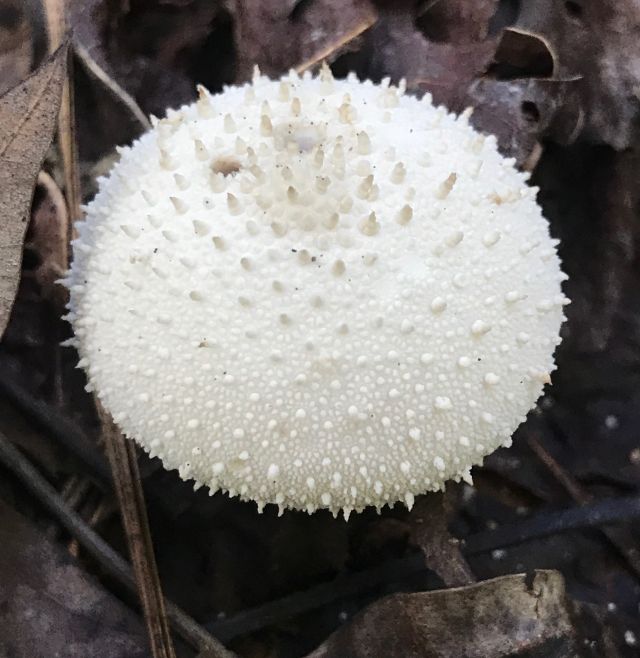 But when it matures a hole appears at the top.
But when it matures a hole appears at the top.
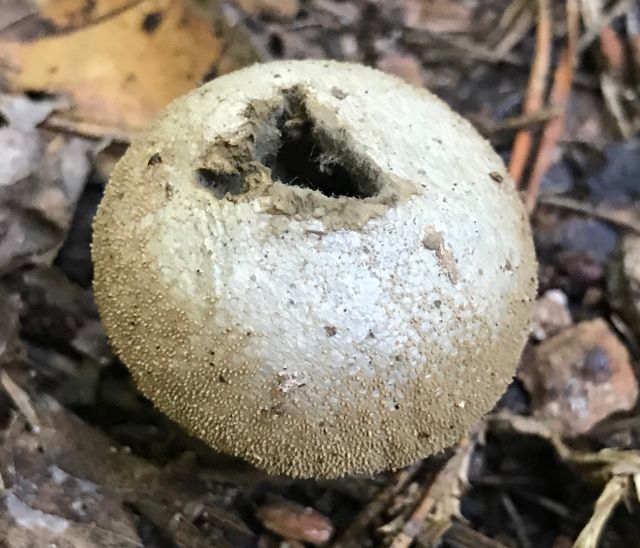
In addition to the regular looking fungi there are other varieties, here is another one.
But enough with the fungi, what’s edible that’s growing? The blueberries and blackberries are done for the season. And the jujube, such a stellar producer in previous years, has no fruit at all – probably the late freeze. Although the fig trees were also tripped by the late freeze, there are small figs on a couple of trees which grew back strongly, so figs for the plate later. The apple trees are producing steadily – the early season is in full production and mid- and late-season species look good. The one peach tree as always is afflicted by pests and disease, but the little snippet we had was delightful. Can peach trees be grown organically? My pears should soon be ready apart from one tree that lost all its blossoms in the late freeze.
The vegetable area is humming with activity. Too hot for the greens but the squash looks good.
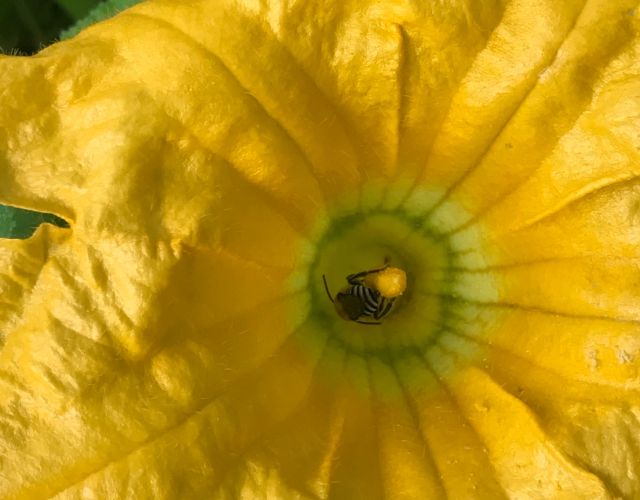
The yellow jackets have not been a problem. I try to walk carefully in the growth looking out for yellow jacket activity – stand on their underground hive and they will chase. I also prod ahead with a long stick not wanting to surprise a snake.

Cucumbers too are flowering and attracting bumblebees.
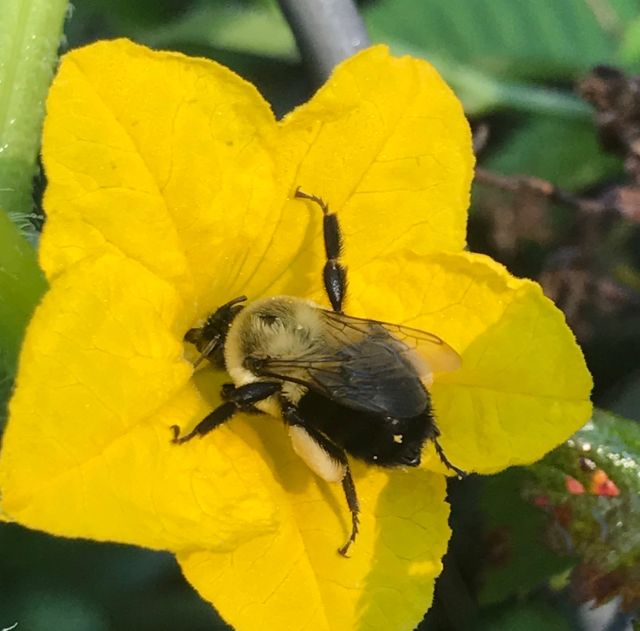
I do have a problem with this insect which started on the blueberries and then relocated down the hill to the vegetable patch and the tomatoes. Yesterday there were parties (10-20) of them gathered on clutches of cherry tomatoes. Instead of my regular standby neem spray, I dowsed them with diatomaceous earth powder, which they do not like. From >100 yesterday, today there were about 20.
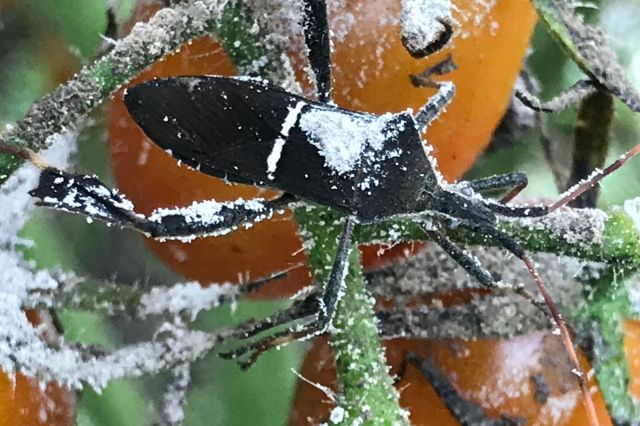
I apply directly on the insects either trickle onto them from above (they seem not to notice) or with my fingers flick the dust onto them.
I planted giant sunflowers among my tomatoes, not a good idea, but they sure are striking.
I was paging through “Botany in a Day” by TJ Elpel. I knew that the tassel of corn contains pollen powder.
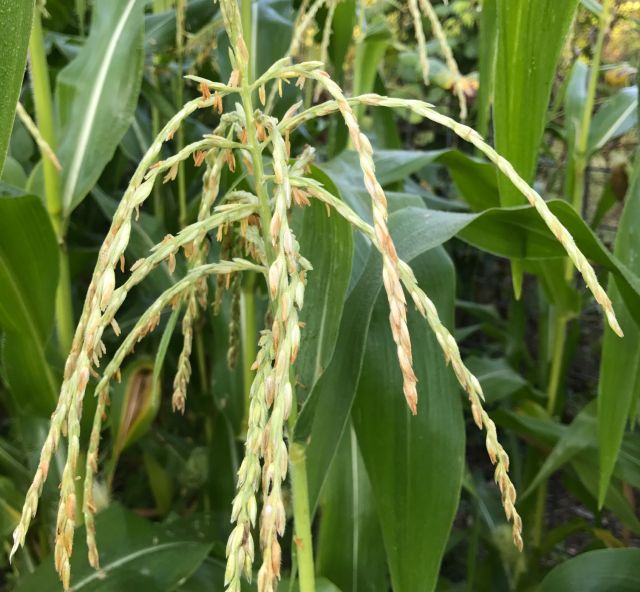
But I was fascinated to learn that corn silk conveys the pollen sperm along its length to impregnate each kernel of corn – therefore every single seed/kernel produced on the cob results from separate impregnation.
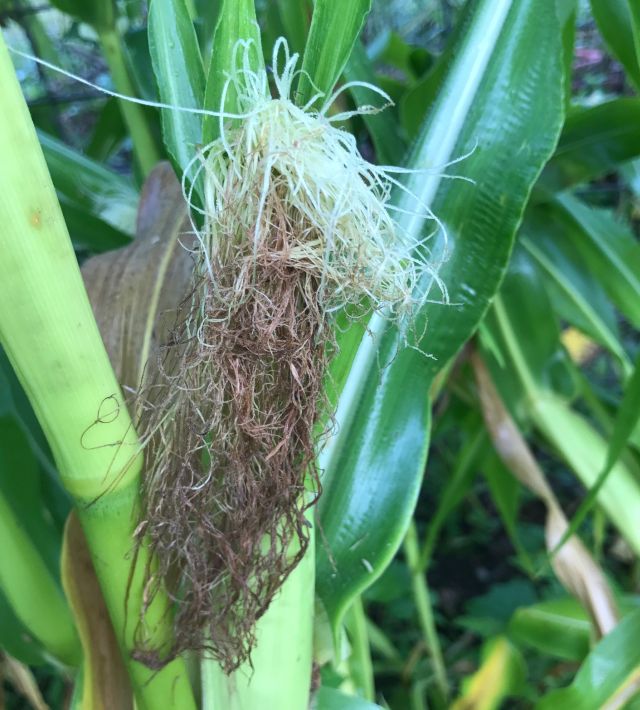
It’s difficult to keep rabbits out and they love young bean plants.
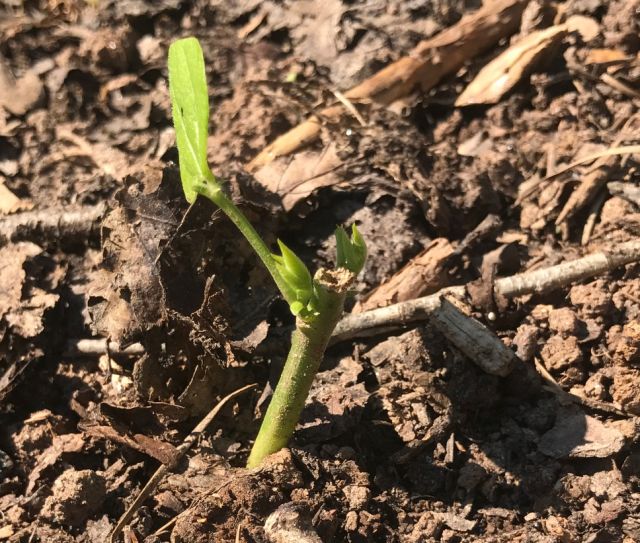
I surrounded a raised bed with surplus shelving and it denies access to rabbits, so far.
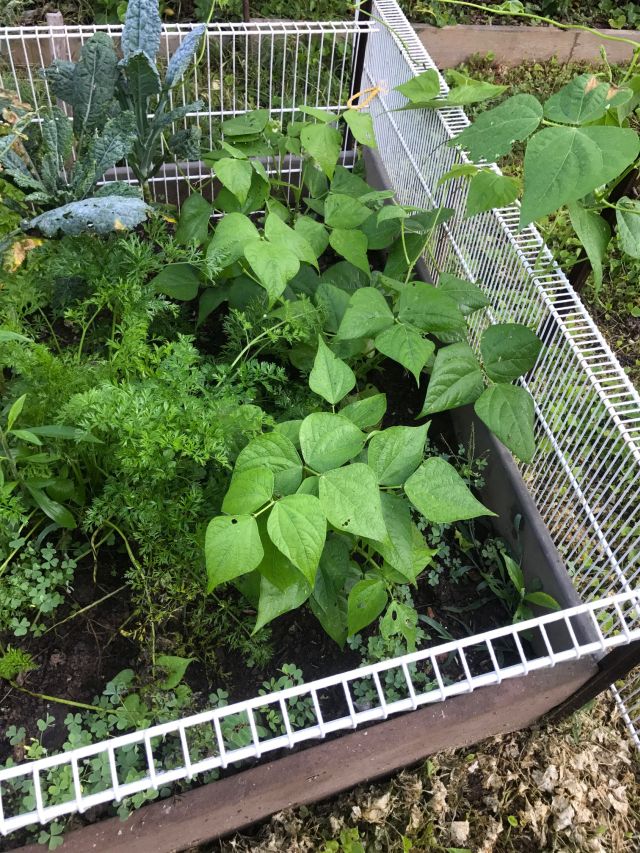
And finally a smaller visitor among fallen apples.

